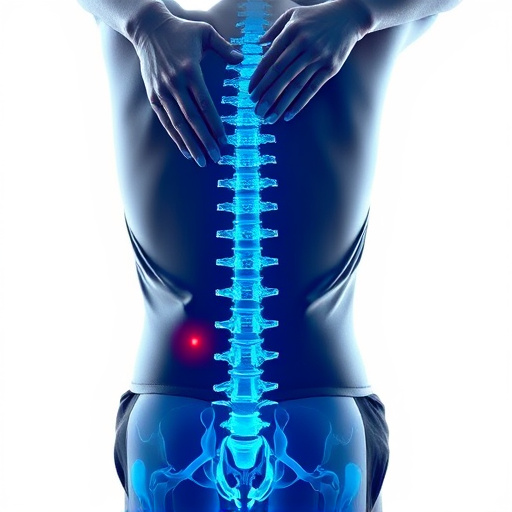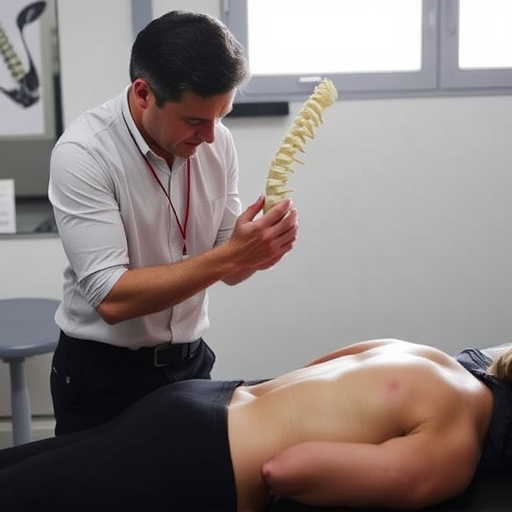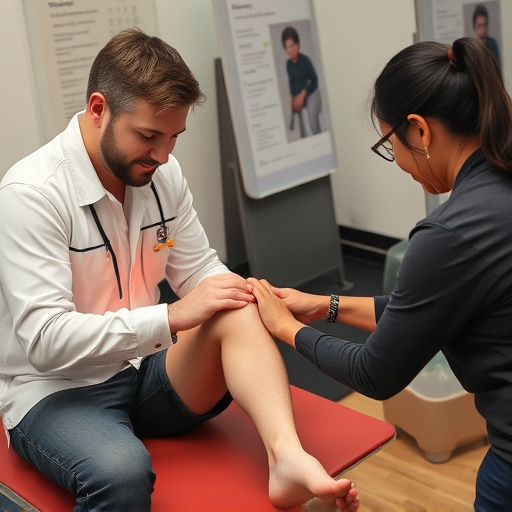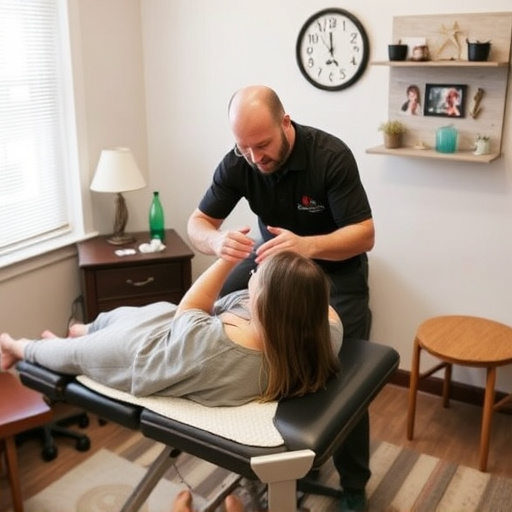Military service members face unique physical challenges, including acute and chronic injuries. Physical therapy (PT) plays a crucial role in specialized military injury treatment, offering tailored non-invasive treatments like manual therapy and rehabilitation programs for conditions like herniated discs. Integrating PT into comprehensive plans improves recovery outcomes, accelerates healing, enhances mobility and functional abilities, and promotes faster returns to duty.
In the realm of military injury treatment, physical therapy (PT) plays an indispensable role in helping service members overcome unique challenges. This article delves into understanding military injuries, their distinct complexities, and the crucial role PT interventions play in facilitating optimal recovery. We explore how integrating PT into comprehensive military treatment plans enhances overall healing and promotes successful returns to duty. By examining these aspects, we underscore physical therapy’s game-changing impact on military injury care.
- Understanding Military Injuries and Their Unique Challenges
- Physical Therapy Interventions for Optimal Recovery
- Integrating PT into Comprehensive Military Treatment Plans
Understanding Military Injuries and Their Unique Challenges

Military service members often face unique physical challenges due to the demanding nature of their work and the potential risks they encounter. Military injuries can range from acute trauma, such as blast injuries and fractures, to chronic conditions like repetitive stress injuries and musculoskeletal disorders. These injuries require specialized care, as standard medical treatments may not always be effective or appropriate for active duty service members.
Many military personnel suffer from conditions like herniated discs, which demand tailored non-invasive treatment plans to facilitate sports injury recovery and overall mobility. Physical therapy plays a pivotal role in addressing these challenges by providing personalized rehabilitation programs. These programs focus on pain management, improving strength and flexibility, and restoring functional mobility, enabling service members to return to their duties or civilian life with enhanced physical capabilities.
Physical Therapy Interventions for Optimal Recovery

Physical Therapy plays a pivotal role in military injury treatment plans, offering a wide array of interventions designed to optimize recovery and enhance soldiers’ return to duty. These evidence-based practices are tailored to address specific medical conditions, focusing on both short-term relief and long-term functional rehabilitation. For instance, physical therapists are adept at managing acute pain, including lower back pain, through various modalities such as manual therapy, exercise interventions, and advanced techniques like ultrasound and electrical stimulation.
In the context of military injuries, where individuals often face unique challenges due to intense physical demands and specific trauma, personalized treatment plans are paramount. Physical Therapists work closely with medical teams to create individualized programs that consider each soldier’s unique needs, goals, and limitations. This holistic approach ensures that rehabilitation not only addresses the immediate injury but also facilitates a safe and effective transition back to active duty, emphasizing the importance of functional rehabilitation in military injury treatment.
Integrating PT into Comprehensive Military Treatment Plans

Integrating physical therapy (PT) into comprehensive military injury treatment plans is a strategic move that enhances overall patient care and recovery outcomes. PT plays a pivotal role in addressing various physical challenges faced by military personnel, from acute injuries sustained during active duty to chronic conditions resulting from previous deployments. By incorporating specialized PT programs, military healthcare systems can offer tailored interventions for conditions like car accident injury care, herniated disc treatment, and pinched nerve relief—ensuring service members receive holistic support throughout their recovery journey.
This integrated approach leverages the expertise of physical therapists, who are trained to design and implement exercise regimens, manual therapy techniques, and educational programs that cater to individual needs. Such personalized care not only accelerates healing but also empowers military personnel with the necessary tools to manage their health effectively post-injury. Ultimately, seamless integration of PT into military treatment plans fosters better mobility, enhances functional abilities, and promotes faster return to duty, reflecting a commitment to comprehensive and effective military injury treatment.
Physical therapy plays a pivotal role in enhancing the recovery and rehabilitation of service members affected by military injuries. By integrating specialized interventions tailored to address unique challenges, physical therapists contribute significantly to comprehensive military injury treatment plans. These evidence-based practices not only optimize physical function and mobility but also foster resilience and independence for veterans, enabling them to reintegrate into active life and community settings with enhanced quality of life.














